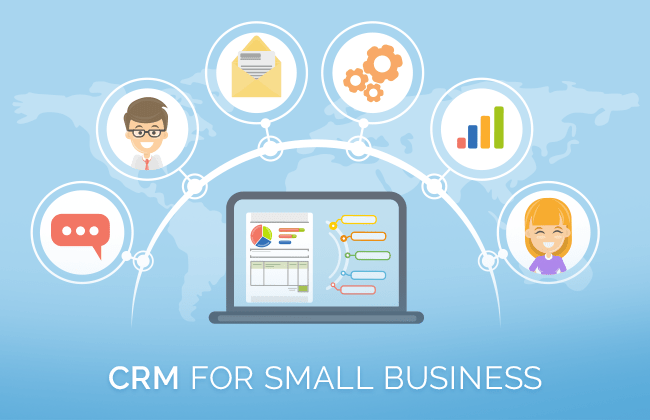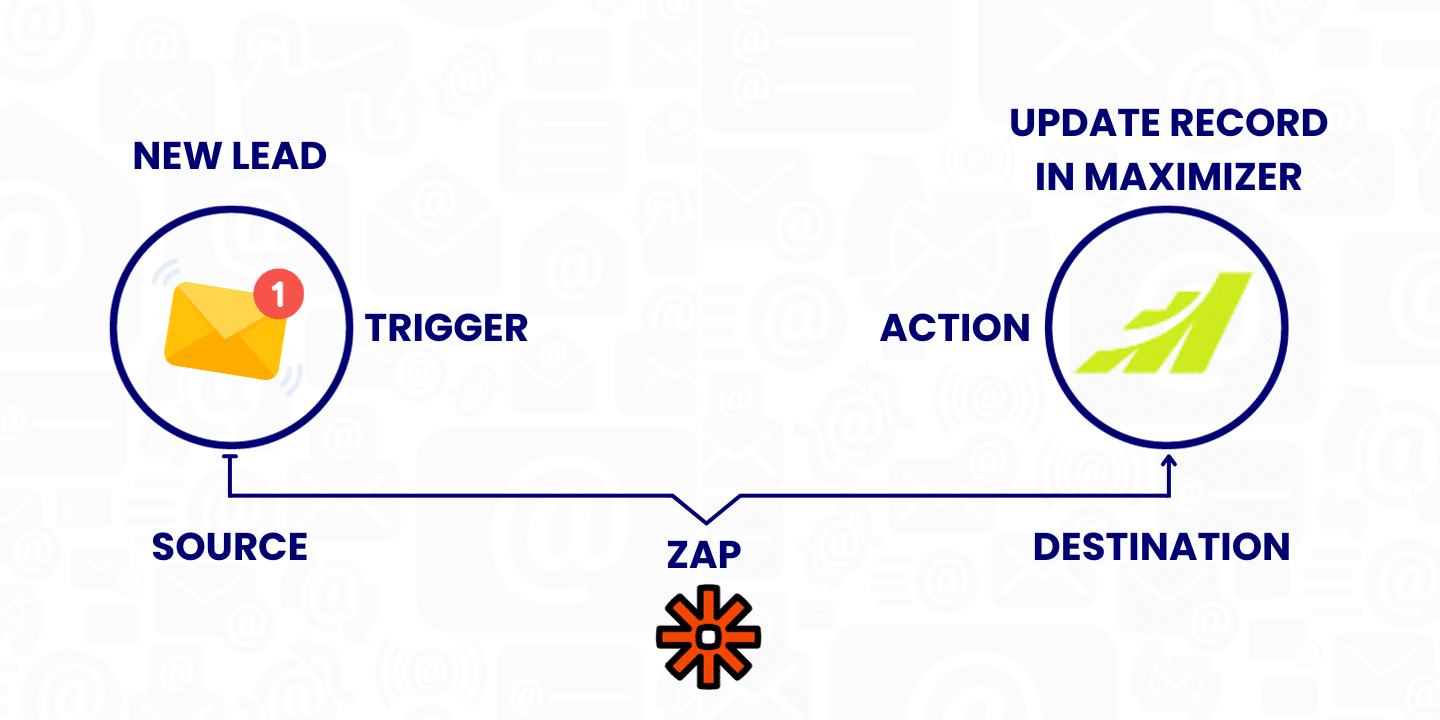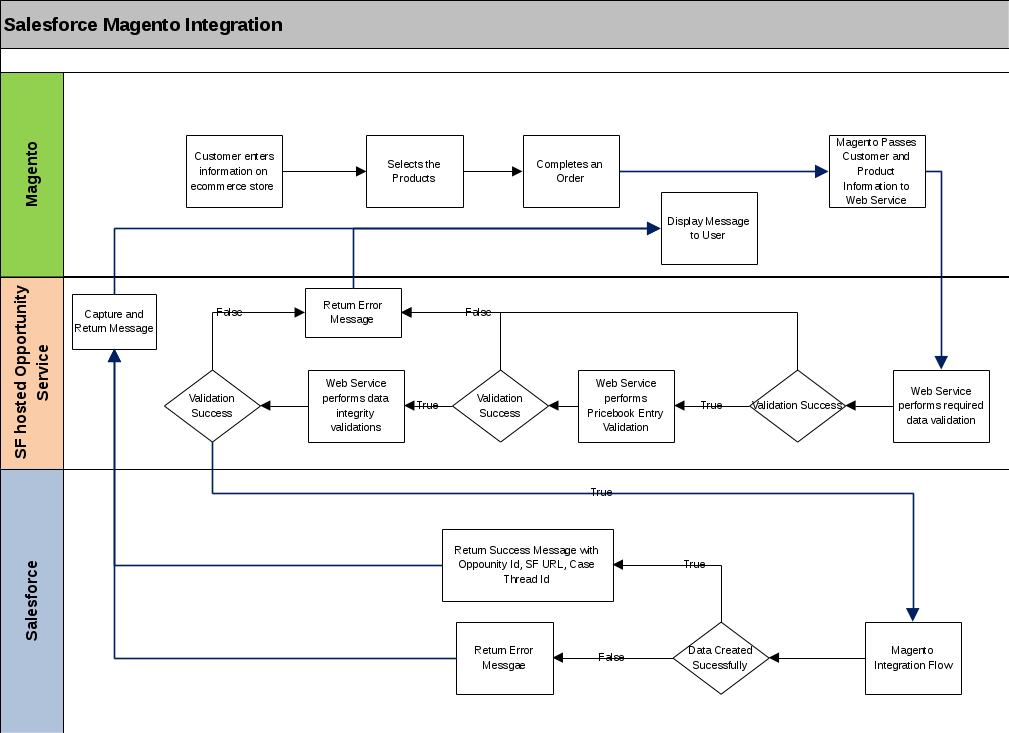
Introduction: The Small Business Owner’s Dilemma
Running a small business is a marathon, not a sprint. You wear countless hats, juggle multiple responsibilities, and constantly seek ways to optimize your time and resources. One of the biggest challenges you face is managing customer relationships. Keeping track of leads, following up with prospects, and providing excellent customer service can feel like an overwhelming task, especially when you’re already stretched thin. This is where Customer Relationship Management (CRM) software comes in. But not just any CRM – a CRM tailored for small business automation.
In today’s fast-paced business environment, manual processes are simply unsustainable. They lead to missed opportunities, frustrated customers, and ultimately, lost revenue. Automating your small business operations is no longer a luxury; it’s a necessity. And at the heart of this automation lies a powerful tool: a CRM system. This article will delve into the world of CRM for small business automation, exploring its benefits, key features, and how to choose the right solution for your unique needs. We’ll also explore the practical aspects of implementation and provide actionable strategies to maximize your CRM’s impact.
Understanding the Power of CRM for Small Businesses
Before we dive into the specifics, let’s establish a clear understanding of what CRM is and why it’s so crucial for small businesses. At its core, a CRM system is a software solution designed to manage and analyze customer interactions and data throughout the customer lifecycle. It’s a central hub for all your customer-related information, including contact details, communication history, purchase history, and more. But a CRM is much more than just a digital rolodex. It’s a powerful tool that can transform the way you do business.
Benefits of CRM for Small Business Automation:
- Enhanced Customer Relationships: CRM empowers you to build stronger relationships with your customers by providing a 360-degree view of each interaction. You can personalize your communication, anticipate their needs, and provide exceptional customer service.
- Increased Efficiency: Automation features within a CRM system streamline repetitive tasks, freeing up your time to focus on more strategic initiatives. This includes automating tasks like lead nurturing, email marketing, and appointment scheduling.
- Improved Sales Performance: CRM helps you track leads, manage your sales pipeline, and close deals more effectively. By centralizing your sales data, you gain valuable insights into your sales process, enabling you to identify areas for improvement and optimize your sales strategies.
- Data-Driven Decision Making: CRM provides valuable data and analytics that help you understand your customers, identify trends, and make informed business decisions. You can track key metrics such as customer acquisition cost, customer lifetime value, and sales conversion rates.
- Cost Reduction: By automating tasks and improving efficiency, CRM can help you reduce operational costs. For example, automating marketing campaigns can significantly reduce your marketing expenses.
- Scalability: As your business grows, your CRM system can scale with you. Most CRM solutions offer various pricing plans and features to accommodate the changing needs of your business.
Key Features to Look for in a CRM for Small Business Automation
Not all CRM systems are created equal. When choosing a CRM for your small business, it’s essential to consider the features that will best support your automation goals. Here are some key features to look for:
1. Contact Management:
At the heart of any CRM is contact management. This feature allows you to store and organize all your customer contact information in one centralized location. Look for features such as:
- Contact Database: A well-organized database to store contact information, including names, email addresses, phone numbers, and addresses.
- Segmentation: The ability to segment your contacts based on various criteria, such as demographics, purchase history, and engagement level.
- Import/Export: Easy import and export of contact data from other sources, such as spreadsheets and email platforms.
2. Sales Automation:
Sales automation is crucial for streamlining your sales process and improving sales performance. Key features include:
- Lead Management: Tools to track leads, qualify them, and assign them to sales representatives.
- Sales Pipeline Management: Visual representation of your sales pipeline, allowing you to track deals through each stage of the sales process.
- Task Automation: Automate repetitive tasks such as sending follow-up emails, scheduling calls, and creating tasks.
- Deal Tracking: Track the progress of each deal, including the value, probability of closing, and expected close date.
3. Marketing Automation:
Marketing automation features help you nurture leads, engage with customers, and drive conversions. Key features include:
- Email Marketing: Create and send targeted email campaigns, track open rates, click-through rates, and conversions.
- Lead Nurturing: Automate email sequences to nurture leads and guide them through the sales funnel.
- Social Media Integration: Connect your CRM to your social media accounts to track engagement and manage your social media presence.
- Landing Page Creation: Create landing pages to capture leads and promote your products or services.
4. Customer Service Automation:
Customer service automation features help you provide excellent customer service and resolve customer issues efficiently. Key features include:
- Help Desk Integration: Integrate your CRM with a help desk system to manage customer support tickets.
- Knowledge Base: Create a knowledge base to provide customers with self-service support.
- Chatbots: Implement chatbots to provide instant support and answer frequently asked questions.
- Ticket Management: Track and manage customer support tickets, ensuring that all issues are resolved in a timely manner.
5. Reporting and Analytics:
Reporting and analytics features provide valuable insights into your business performance. Key features include:
- Customizable Dashboards: Create dashboards to track key metrics and visualize your data.
- Reporting Tools: Generate reports on sales performance, marketing campaign effectiveness, and customer service metrics.
- Data Analysis: Analyze your data to identify trends, patterns, and areas for improvement.
6. Integrations:
The ability to integrate with other business tools is crucial for streamlining your workflow and maximizing the value of your CRM. Look for integrations with:
- Email Platforms: Gmail, Outlook, and other email providers.
- Accounting Software: QuickBooks, Xero, and other accounting software.
- E-commerce Platforms: Shopify, WooCommerce, and other e-commerce platforms.
- Social Media Platforms: Facebook, Twitter, LinkedIn, and other social media platforms.
Choosing the Right CRM for Your Small Business
Selecting the right CRM is a crucial decision that can significantly impact your business’s success. Here’s a step-by-step guide to help you choose the perfect CRM solution:
1. Define Your Needs and Goals:
Before you start evaluating CRM systems, take the time to define your specific needs and goals. What are you hoping to achieve with a CRM? What are your current pain points? Identify the key features that are essential for your business. Consider your sales process, marketing strategy, and customer service operations.
2. Research and Compare CRM Solutions:
Once you have a clear understanding of your needs, start researching different CRM solutions. There are numerous options available, each with its own strengths and weaknesses. Consider factors such as:
- Pricing: CRM pricing models vary widely, from free plans to enterprise-level solutions. Choose a plan that fits your budget and your business needs.
- Features: Ensure that the CRM offers the features you need to automate your key business processes.
- Ease of Use: Choose a CRM that is easy to learn and use. A user-friendly interface will increase adoption and maximize the value of your investment.
- Integrations: Make sure the CRM integrates with the other tools you use, such as your email platform, accounting software, and e-commerce platform.
- Scalability: Choose a CRM that can scale with your business as it grows.
- Customer Support: Look for a CRM provider that offers excellent customer support.
3. Consider Your Budget:
CRM systems come in a variety of price points, ranging from free, basic options to more comprehensive, paid plans. Consider your budget and the features that are most important to your business. Remember that the cheapest option isn’t always the best. Sometimes, investing in a more robust solution with advanced automation capabilities can save you time and money in the long run.
4. Read Reviews and Seek Recommendations:
Before making a final decision, read online reviews from other small business owners. These reviews can provide valuable insights into the strengths and weaknesses of different CRM solutions. Also, ask for recommendations from your network. Other business owners in your industry may have experience with different CRM systems and can offer valuable advice.
5. Request Demos and Free Trials:
Many CRM providers offer free demos and free trials. Take advantage of these opportunities to test out different CRM systems and see which one best fits your needs. During the demo or trial, pay close attention to the user interface, the ease of use, and the features that are most important to you.
6. Prioritize User-Friendliness:
A CRM system is only as good as its adoption rate. If your team finds the system difficult to use, they won’t use it, and you won’t reap the benefits. Choose a CRM with a clean, intuitive interface that’s easy to navigate. Look for features like drag-and-drop functionality and customizable dashboards.
7. Evaluate Customer Support:
When you inevitably run into questions or issues, you’ll need reliable customer support. Check out the CRM provider’s support options. Do they offer phone, email, and chat support? Are there helpful resources like knowledge bases and tutorials? A responsive and helpful support team can make all the difference when you’re getting started.
Implementing Your CRM for Maximum Impact
Once you’ve chosen your CRM, the real work begins: implementation. Here’s a guide to help you implement your CRM successfully and maximize its impact on your business:
1. Plan Your Implementation:
Before you start implementing your CRM, create a detailed implementation plan. This plan should include:
- Project Goals: Clearly define your goals for the CRM implementation.
- Timeline: Set a realistic timeline for the implementation process.
- Team Roles and Responsibilities: Assign roles and responsibilities to your team members.
- Data Migration Plan: Plan how you will migrate your existing data into the CRM.
- Training Plan: Plan how you will train your team on how to use the CRM.
2. Data Migration:
Migrating your existing data into your new CRM is a crucial step. Make sure you have a clean, organized database before you start. This may involve cleaning up contact information, removing duplicates, and standardizing data formats. Most CRM systems offer import tools to help you migrate data from spreadsheets or other sources.
3. Customize Your CRM:
CRM systems are often highly customizable. Take the time to customize your CRM to fit your specific business needs. This may involve:
- Configuring User Roles and Permissions: Set up user roles and permissions to control who has access to specific data and features.
- Customizing Fields and Forms: Customize the fields and forms to capture the information that is most important to your business.
- Setting Up Workflows and Automations: Set up workflows and automations to streamline your business processes.
4. Train Your Team:
Proper training is essential for ensuring that your team adopts the CRM and uses it effectively. Provide your team with comprehensive training on how to use the CRM, including its key features and how to use them. Offer ongoing training and support to ensure that your team members stay up-to-date on the latest features and best practices.
5. Integrate with Other Tools:
Integrate your CRM with other tools you use, such as your email platform, accounting software, and e-commerce platform. This will streamline your workflow and maximize the value of your CRM.
6. Monitor and Evaluate:
Once your CRM is up and running, monitor its performance and evaluate its impact on your business. Track key metrics, such as customer acquisition cost, customer lifetime value, and sales conversion rates. Use the data to identify areas for improvement and optimize your CRM strategy.
Automating Key Processes with Your CRM
The true power of a CRM lies in its ability to automate key business processes. Here are some examples of how you can automate different areas of your business using a CRM:
1. Sales Automation:
- Lead Qualification: Automatically score leads based on their behavior and demographics, and assign them to the appropriate sales representative.
- Follow-Up Emails: Automatically send follow-up emails to leads and prospects based on their activity.
- Appointment Scheduling: Allow customers to schedule appointments directly through your CRM.
- Sales Pipeline Management: Automate the movement of deals through your sales pipeline.
2. Marketing Automation:
- Email Marketing Campaigns: Automate the creation and sending of email marketing campaigns.
- Lead Nurturing: Create automated email sequences to nurture leads and guide them through the sales funnel.
- Social Media Posting: Schedule and automate social media posts.
- Personalized Content: Personalize your marketing content based on customer data.
3. Customer Service Automation:
- Automated Responses: Automatically respond to customer inquiries with pre-written responses.
- Ticket Routing: Automatically route customer support tickets to the appropriate team members.
- Knowledge Base Articles: Provide customers with self-service support through a knowledge base.
- Feedback Collection: Automate the collection of customer feedback.
Overcoming Common Challenges in CRM Implementation
While CRM can be a game-changer for small businesses, implementing a CRM can also present some challenges. Here’s how to overcome some of the most common hurdles:
1. User Adoption:
One of the biggest challenges is getting your team to adopt the CRM. To increase user adoption:
- Provide Comprehensive Training: Ensure that your team receives adequate training on how to use the CRM.
- Highlight the Benefits: Clearly communicate the benefits of using the CRM to your team.
- Make it Easy to Use: Choose a CRM that is user-friendly and easy to navigate.
- Provide Ongoing Support: Offer ongoing support and training to your team.
2. Data Migration Issues:
Data migration can be a complex process. To minimize data migration issues:
- Clean Your Data: Clean and organize your data before migrating it into the CRM.
- Test the Migration: Test the migration process before migrating all of your data.
- Back Up Your Data: Back up your data before migrating it.
3. Integration Problems:
Integrating your CRM with other tools can sometimes be challenging. To minimize integration problems:
- Choose a CRM with Robust Integrations: Choose a CRM that integrates seamlessly with the other tools you use.
- Test the Integrations: Test the integrations before going live.
- Seek Support: Seek support from the CRM provider if you encounter any integration issues.
4. Lack of Customization:
Failing to customize the CRM to your specific business needs can lead to wasted time and effort. To avoid this:
- Plan Your Customization: Plan how you will customize the CRM before you start.
- Prioritize Your Customization: Prioritize the customizations that are most important to your business.
- Seek Help if Needed: Seek help from the CRM provider or a consultant if you need assistance with customization.
The Future of CRM for Small Businesses
The world of CRM is constantly evolving, and the future holds exciting possibilities for small businesses. Here are some trends to watch:
1. Artificial Intelligence (AI):
AI is already transforming CRM, and its impact will continue to grow. AI-powered CRM systems can provide valuable insights, automate tasks, and personalize customer experiences. Expect to see more AI-driven features in CRM systems in the future, such as:
- Predictive Analytics: Predict customer behavior and identify potential sales opportunities.
- Chatbots: Provide instant customer support and answer frequently asked questions.
- Personalized Recommendations: Provide personalized product recommendations to customers.
2. Mobile CRM:
Mobile CRM is becoming increasingly important as businesses become more mobile. Mobile CRM systems allow you to access your CRM data and manage your business from anywhere, at any time. Expect to see more mobile-friendly CRM features in the future, such as:
- Mobile Apps: Dedicated mobile apps for accessing your CRM data.
- Offline Access: Access your CRM data even when you don’t have an internet connection.
- Voice-Activated Commands: Use voice commands to interact with your CRM.
3. Integration with Emerging Technologies:
CRM systems will continue to integrate with emerging technologies, such as:
- Internet of Things (IoT): Connect your CRM to IoT devices to track customer behavior and gather data.
- Virtual Reality (VR) and Augmented Reality (AR): Use VR and AR to create immersive customer experiences.
- Blockchain: Securely store customer data using blockchain technology.
Conclusion: Embracing CRM for Small Business Success
In conclusion, CRM is an indispensable tool for small businesses looking to thrive in today’s competitive landscape. By automating your customer interactions, sales processes, and marketing efforts, you can boost efficiency, improve customer relationships, and drive revenue growth. Choosing the right CRM, implementing it effectively, and embracing the power of automation will set your small business on the path to long-term success. Don’t let manual processes hold you back. Embrace the power of CRM and watch your business flourish.


